HOME > Exibitions > Upcoming

Museum Collection Exhibition
Ayanishiki
Textile Beauty Appreciated in Nishijin- Saturday, December 20, 2025 - Sunday, February 1, 2026
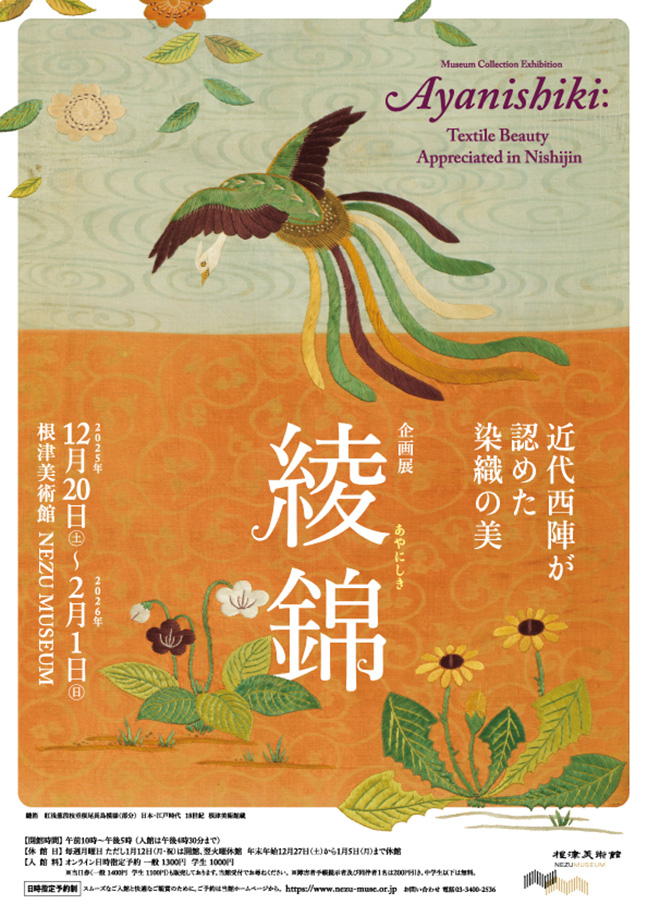
| Closed | Closed on Mondays, except January 12, and closed on January 13 Saturday, December 27, 2025 - Monday, January 5, 2026 |
|---|---|
| Hours | 10 a.m. - 5 p.m.(last entry: 4:30 p.m.) |
| General admission (On-line timed-entry tickets) | Adult 1300 yen, Student 1000 yen |
| Gallery | 1, 2 |
The Nishijin Textile Center (now the Kyoto City Archaeological Museum) held exhibitions for about a decade, starting in 1915, of textiles borrowed from eminent temples in the Kyoto area and textile collectors. Those exhibitions of famous works and secret treasures, from all over the world, were highly regarded. The organizers also selected particularly outstanding works from the exhibitions and published them in eleven volumes that reproduce the textile designs in prints and collotypes. That set of books is the Ayanishiki.
The Ayanishiki volume on Noh costumes and antique sarasa includes many mentions of Nezu Kaichirō, Sr. (1860-1940), who established the base of our museum’s collection, as an exhibitor. That source makes it clear that Kaichirō lent many textiles for those Taisho period (1912-1926) exhibitions; moreover, the designs reproduced in it let us identify which works he showed then.
In this exhibition, visitors can see 20 works from Kaichirõ’s collection that were reproduced in Ayanishiki and that can be confirmed to be part of the collection today. Please enjoy this sophisticated textile collection—a collection that even the textile artists and connoisseurs of modern Nishijin appreciated.
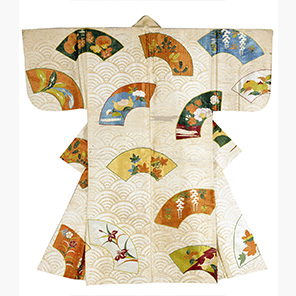
- Nuihaku Noh Costume with Flowers in Fan Shape Design
- Japan Edo period, 17th-18th centuries
Nezu Museum - Fan shapes, packed with botanical motifs embroidered in countless colors, are scattered over the entire surface of this nuihaku robe. Gold leaf seigaiha, semicircular repeated wave shape patterns, fill the spaces between the fans. This entire robe and close ups of its details covered in five pages in volume 6 of Ayanishiki, attesting to the considerable attention it received.
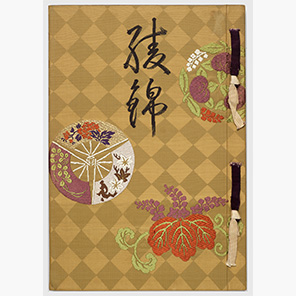
- Ayanishiki
- Nishijin Textile Center
- Japan 1916-1925 Nezu Museum
- From 1916 to 1925, Unsodo, a Kyoto art publisher, published these eleven volumes of textile designs (one is actually about old mirrors). In addition to the detailed prints based on copies of works by painters and designers, the covers, of cloth woven exclusively for these volumes’ bindings, are superb.
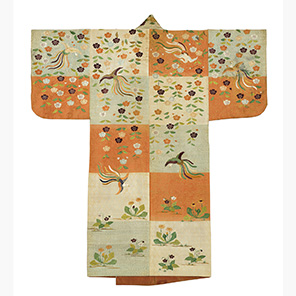
- Nuihaku Noh Costume with Weeping Cherry and Long-Tailed Bird Design
-
Japan Edo period, 18th century
Nezu Museum - Elegant long-tailed birds are fluttering about in front of a weeping cherry tree on the body of this robe, and charming violets and dandelions adorn the area near its hem. The ground has been dyed in three colors; the rising stream design decorates the white sections, flowing water the pale blue ones, and scroll design the red. All are of applied metallic leaf, in the surihaku technique. This work is included in volume 6, which presents designs from Noh costumes, of Ayanishiki.
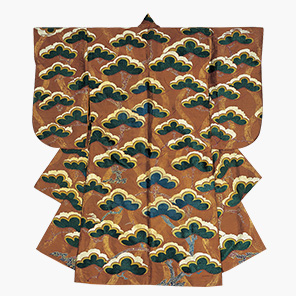
- Nuihaku Noh Costume with Pine Tree Covered with Snow Design on Brown Ground
-
Japan Momoyama period, 17th century
Nezu Museum - The grand pine-tree-covered-with-snow design on this nuihaku robe for a child performer communicates the Momoyama-period ambience. The name of a work that is probably this one was included in the Ōtani Family, Nishi-honganji Temple Auction Catalogue, which was issued in 1913.










